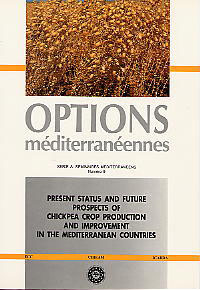| Article précédent | p. 55-60 | Article suivant |
Chickpea breeding for resistance to Ascochyta blight
Crino P.
The utilization of resistant cultivars is the most effective way for the control of the pathogen but the knowledge of ascochyta races is a very important prerequisite in chickpea breeding programs. Mutagenesis methodologies are utilized as useful tools to induce new genetic resistances not available in nature.Screening methods for the selection of a large number of lines were developed firstly under greenhouse conditions, by artificial inoculation, then in the field where the presence of inoculum at low densities is assured. This methodology is based on the dipping of some control seeds in a conidial suspension of A. rabiei and their subsequent intercropping with the lines to be screened.
- [ Afficher ]
- [ Télécharger ]
- [ Exporter la citation ]
Vous pouvez télécharger la citation au format :
- [ Imprimer ]
-
Mots-clés
AMELIORATION DES PLANTES, ASCOCHYTA, CICER ARIETINUM, REGION MEDITERRANEENNE, RESISTANCE AUX MALADIESCiter cet article
Crino P. Chickpea breeding for resistance to Ascochyta blight. In : Saxena M.C. (ed.), Cubero J.I. (ed.), Wery J. (ed.). Present status and future prospects of chickpea crop production and improvement in the Mediterranean countries. Zaragoza : CIHEAM, 1990. p. 55-60. (Options Méditerranéennes : Série A. Séminaires Méditerranéens; n. 9). Present Status and Future Prospects of Chickpea Crop Production and Improvement in the Mediterranean Countries, 11-13 Jul 1988, Zaragoza (Spain). http://om.ciheam.org/om/pdf/a09/91605011.pdf



